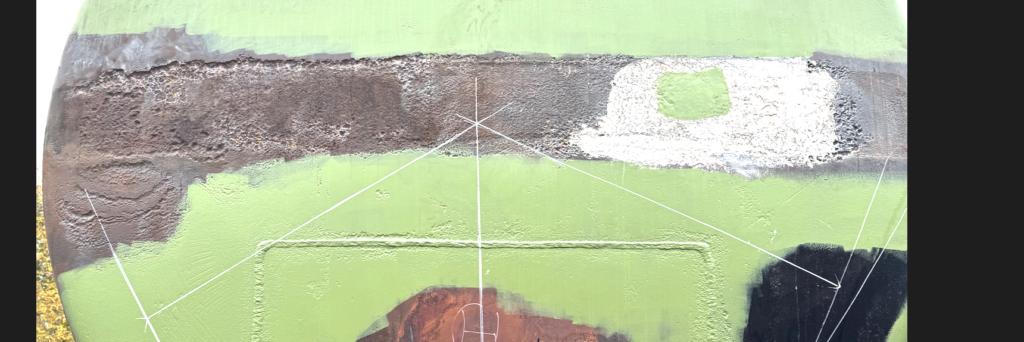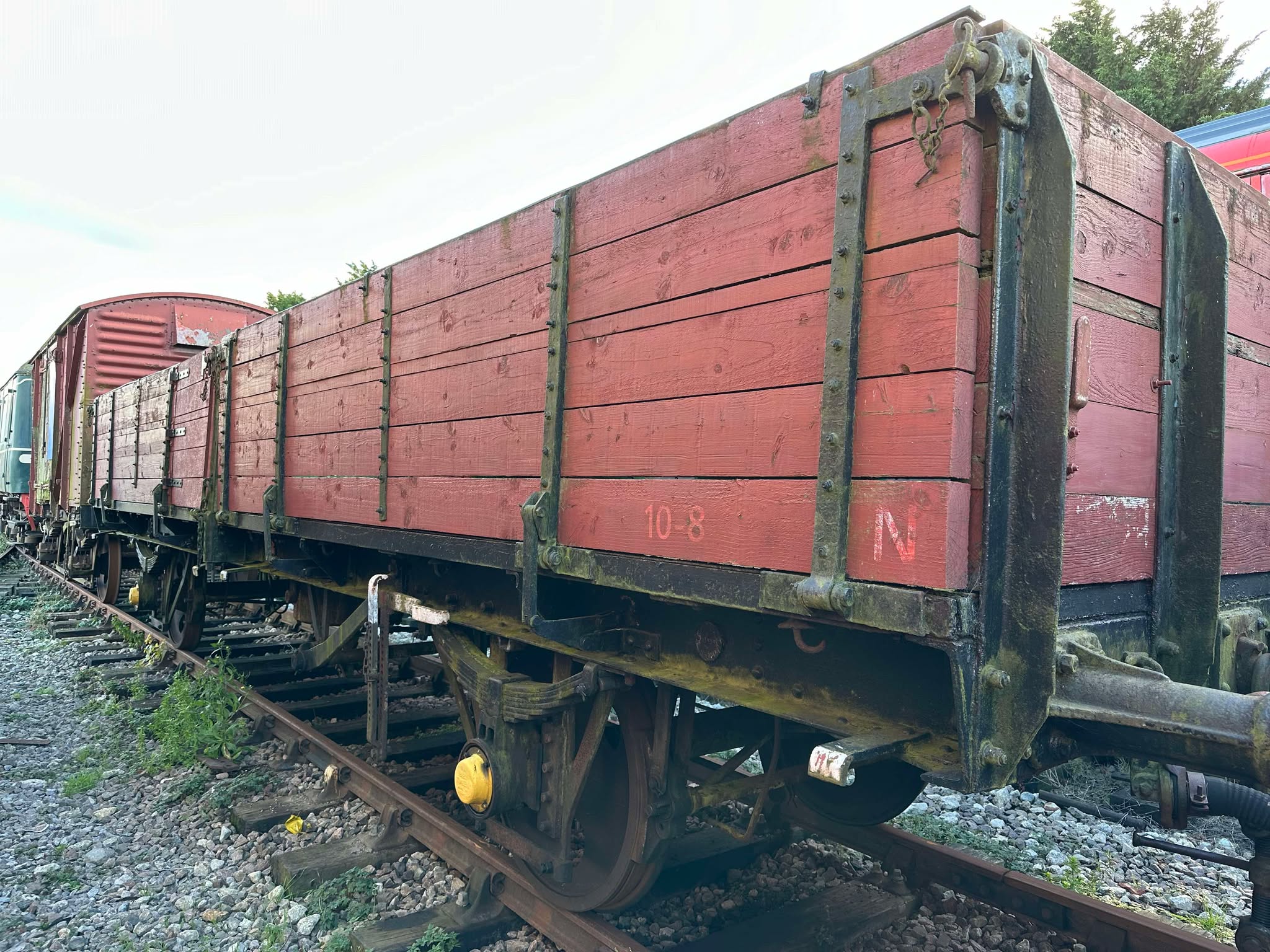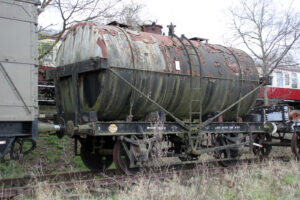Every heritage organisation involved in preserving history has the same core issues: money, labour, time, and desire.
If you don’t have a group of people with the desire and time to preserve something – and in this context, we are talking about wagons, nothing will be preserved. You could argue to a point that, with limited budgets, you could achieve preservation of an item, but something like needing a spring or a rare bracket or casting would make it almost impossible at that point.
However, I want to explore the lesser-known challenges of preservation, which I think are applicable to all types of preservation but mostly to wagons.
Lack of movement
When wagon designers designed their wagons, they thought that a wagon only earns money if it’s moving. Rail vehicles are designed to move, but when they stop, their design does not always support long-term inactivity. Long periods of inactivity can lead to joint seizures and stuck brakes. Stationary wagons become safe places for rodents or wildlife, and nearby trees can have their leaves entangled within the crevices of the chassis.
A moving wagon will have enough airflow to blow debris off it, be moving fast enough that rodents can’t move in, and be under a regular maintenance program. That’s not to say people in preservation don’t maintain things, but oils, for example, would be changed frequently, meaning they would have less risk of collecting moisture, etc. What was once a valid maintenance program needs adjustment to suit the wagon’s new lifestyle.
Additionally, any greased bearings or moving parts could, over time, have the grease settle to the bottom, which means any parts higher up would possibly be without lubrication or protection from environmental factors.
I mentioned brakes earlier. The steam locomotive team periodically applies new oil to WD190 and releases the handbrake as part of its maintenance routine. Keeping it “in use” ensures that none of these parts seize due to its lack of movement.
Water
Perhaps one of the biggest pains. A wagon travelling will have air moving around the wagon – that will dry the wagon out. When a wagon sits, its flat services act as a shelf for water; wood and flaking paint will trap water. Water will sit and damage paintwork; it can freeze, expand, and cause cracking. Fine particles of dirt within the rainwater can get into threads on nuts and bolts

The oak saddle in 1855 braced the tank at both ends. Due to its sitting and no constant air flow, we think the corrosion is down to tannic acid. The tannins reacted with the iron to produce the acid. Had the wagon been moving, the airflow would have kept the wood and tank dry.
You can see the “edges” where the oak, tank, and air met, and it had far worse corrosion. To mitigate against these kinds of risks, we have to engineer for this as best as we can while retaining the wagon’s unaltered presentation.
Old types of paint
Many older wagons were most likely painted with lead-based paints—or other types. The paint created a slightly different texture or feel, something that would be harder to replicate in modern paints.
Additionally, if you have different types of paint and you need to match the colours, it can be problematic to create a perfect match. This would mean that it would be possible to see which bits were not painted or what bits were painted recently.
It is possible to seek out some heritage formula-based paints, but these can add significant cost to a restoration project. While painting surfaces can be acceptable for smaller components and details, it can be cost-prohibitive for larger components and details.
Creosote
Railways used creosote, known for its distinct smell, to preserve sleepers, wooden wagon components, and other wooden parts with minimal human contact. In 2003, the UK and EU banned its use, except for limited cases like telegraph poles.
It means now that in situations like the one in 1855, when we had to replace the saddle on the tank, we had to seek alternative wood preservation methods. Creosote is marketed as a Creosote replacement, although it may not preserve the wood for as long as creosote wood.
Since there’s no requirement to remove creosote-treated wood, people prefer to keep it in place for its longevity whenever possible. Once they’re due for replacement, you can’t replace them with the same thing!
Any disposal of creosote products requires like asbestos and used oil, specialist disposal. Further increasing the cost of restorations and heritage railway preservation.
Asbestos
Of course, the elephant in every wagon siding. Asbestos was used as insulation, lagging, brake linings, gaskets and even in some older floor coverings. It can pop up almost anywhere on the railway. It is an expensive barrier to cross; everybody in preservation knows the risk. Removal is a specialist job.
It has been known to “encapsulate asbestos,” but this doesn’t remove it. Asbestos encapsulation is a management method in which a sealant or coating is applied to the material to protect against debris becoming airborne. This doesn’t solve the problem; it just buys some time.
Locomotives
Locomotives are the star of the show—the crowd pleasers, the noise makers. They’re bigger, noisier, and smellier, and they cost more money. This makes other things on the preservation list lower in priority. The locomotives command the attention.
The scrap man
Not everybody likes wagons, but the scrap man loves them. Big chunks of unloved, unwanted, unusable metal. Cut them up and turn them into garden benches, paint tins and trailers to tow behind a Scania. Rail operators, when they have wagons that are of no use to them, often turn directly to the scrap man.
Lack of time, funds and notice are common challenges faced by organisations like CVR Wagon Group, NWPG, and Quorn Wagon & Wagon when preserving a wagon. Preserving a wagon often turns into a last-minute scramble before the cutting torch sparks to life.
Heritage fleet preservation, particularly wagon preservation, is a challenge and requires a delicate balance of resources and time. In preservation, wagons often receive less attention, making them more vulnerable to decay, neglect, parts harvesting, theft, and, if long enough, scrapping.
Yet, despite these challenges, wagons are just as essential to railway history as the locomotives that pull them. Without wagons, freight would never have moved, industries would never have thrived, and the railways would only transport passengers.
With limited human resources, making wagon preservation accessible to everyone is crucial for ensuring its future. While money and materials matter, the most valuable resource is volunteers willing to dedicate their time—regardless of skill level. Railways can teach the necessary skills, but they cannot create more time.
If you have some spare time and would like to meet new people and learn new skills, you can volunteer at your local railway and the Colne Valley Railway by becoming a member. Once you are a member, you can volunteer to help out.

